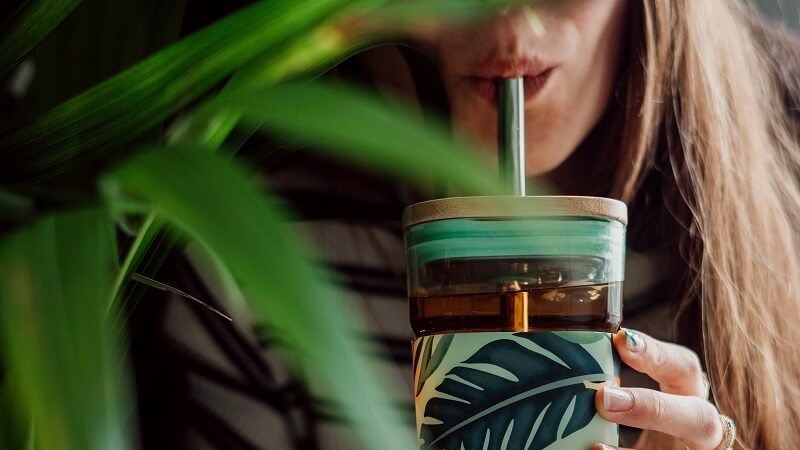
Gym Essentials For Women:A Complete List
Enthusiasts who never miss a session, understanding the gym essentials for women is crucial, not just for what to wear but also for what to

Have you ever pondered the time it takes to pee after drinking water?
This seemingly straightforward question is a window into the intricate workings of our body’s hydration and excretion systems.
In this exploration, we delve into the factors that determine the timing of our urinary response after hydrating.
Diving into the intriguing aspect of human biology: how soon do we pee after drinking water? The answer intriguingly varies from person to person.
For those who are well-hydrated, the need to urinate can manifest quite swiftly, often within a short span of five to fifteen minutes post-drinking.
This rapid response stems from their bodies’ proficient handling of excess water, processing, and expelling it efficiently.
Conversely, individuals with lower hydration levels might not experience the urge to pee for several hours. Their bodies are inclined to conserve water longer to sustain crucial bodily functions and hydration balance.
This diversity in urinary response timings is an excellent demonstration of the body’s remarkable ability to adapt to different states of hydration.
Many hold the notion that despite men consuming more fluids, women tend to urinate more often. However, this is where our knowledge ends.
There is no scientific proof to back the claim that the overall volume of urine produced by men exceeds that of women.
Is this pattern consistent across different age groups? Time to explore further.
Urination isn’t triggered only when the bladder is full. Rather, the brain gets alerted by the bladder when it reaches about a quarter of its capacity, a mechanism that safeguards against the danger of bladder overexpansion.
Healthline reports that age plays a significant role in determining how quickly one pees after hydrating.
Gaining insight into how urine is formed in the body is key to understanding the relationship between water consumption, digestion, and urination. The human body’s urine production process is divided into four distinct stages:
1. Filtration
The journey of urine formation begins with filtration. This initial stage involves the kidneys filtering out excess water along with waste substances from the bloodstream.
The resulting fluid, which will become urine, then travels from the kidneys down the ureters to the urinary bladder.
2. Reabsorption
The second stage is reabsorption.
Following filtration, the kidneys selectively reabsorb crucial nutrients and water back into the bloodstream.
This process ensures that the forming urine predominantly contains waste materials and excess fluids, crucial for maintaining the body’s delicate balance of nutrients and hydration.
3. Secretion
Secretion is the third stage of urine production. Here, certain unwanted substances, including toxins and remnants of pharmaceutical drugs, are secreted from the blood into the urine.
A key component added during this stage is urochrome, the pigment responsible for giving urine its characteristic yellow color.
Urochrome is a by-product of the metabolism of Bilirubin, a substance formed during the breakdown of red blood cells.
4. Urination
The final stage is urination. Once the bladder is sufficiently filled, the brain receives a signal, triggering the urinary system to expel the stored urine.
The urinary sphincter muscles relax, allowing urine to flow from the bladder, through the urethra, and out of the body.
This intricate process of urine formation underscores the importance of maintaining proper hydration for the body’s well-being. It highlights why health experts continually emphasize the need to drink adequate fluids to sustain optimal urinary health and overall physiological balance.
Aside from age and gender, various other elements can impact the time it takes for one to urinate after fluid intake. Let’s delve into these factors:
1. Fluid Type and Quantity Consumed.
The common saying, “I pee frequently after drinking water,” holds true. The more you drink, the quicker your bladder fills, leading to more frequent urination. This is why people often notice a need to pee shortly after consuming a significant amount of water.
Drinking other beverages like coffee, caffeine-rich drinks, and alcoholic beverages also influences urination. These act as diuretics, increasing urine production. Hence, a regular coffee drinker may find themselves urinating more often.
2. Physical Activity Levels.
Your level of physical activity also determines the frequency of urination after drinking.
Athletes and those engaging in regular exercise might notice increased urination, especially if they maintain good hydration practices post-workout.
3. Dietary Habits, Particularly Salt Intake.
Eating salty foods causes the body to retain water for dilution purposes, leading to more frequent urination.
The correlation between a high-salt diet and increased urination frequency is significant.
4. Seasonal and Weather Variations.
The climate plays a crucial role in urination patterns. Hotter temperatures, for example, lead to increased sweating, and consequently, greater water loss.
This increased demand for water intake can result in more frequent urination. Conversely, colder climates might reduce the need to urinate as frequently.
5. Health Conditions and Medication.
Certain medications, particularly diuretics, can increase the frequency of urination. Additionally, one’s overall health—physical, mental, and emotional—can influence urination patterns.
Factors like past traumatic experiences related to urination, obesity, and general body weight are also relevant in determining urination frequency and urgency.
Ignoring the body’s natural urge to urinate after consuming fluids can lead to several health concerns. When the signal to release urine is continually dismissed, it can cause discomfort and elevate the likelihood of urinary tract infections and other complications related to the bladder. Holding urine for extended periods may stretch the bladder beyond its normal capacity, which could result in lasting bladder dysfunction. It’s crucial to heed your body’s instinctual cues, ensuring that urination occurs promptly to preserve urinary health and general well-being.
Key health risks associated with delayed urination include:
Urinary Tract Infections (UTIs)
Bladder Dysfunctions
Potential Long-Term Bladder Damage
Urinary Retention
Paying attention to your body and urinating when the need arises is essential. If you frequently feel the urge to urinate or struggle with bladder control, it’s advisable to consult with a healthcare professional.
In sum, the timeline for urinating post-water consumption is influenced by a variety of factors, including one’s hydration status, age, gender, and daily habits.
Grasping these aspects is key to effectively tuning into and caring for our bodies, which in turn promotes a harmonious balance between fluid intake and expulsion.
This discussion has shed light on the intricacies of urination and the various elements that dictate the speed of urine production and the frequency of urination following the intake of water and other beverages.
Ultimately, there is no universal standard for the number of times one should urinate after hydrating.
The primary goal is to maintain hydration by drinking ample water as per individual needs.


Enthusiasts who never miss a session, understanding the gym essentials for women is crucial, not just for what to wear but also for what to

A common myth circulating in the fitness world is the belief that a gym diet plan is unnecessary. Many seem convinced that they can simply

The average bench press, often referred to humorously in gyms as ‘How much ya bench’ or ‘whaddaya bench?’, stands as a quintessential measure of strength

Nowadays, we always seem to be packing a bag for something. Whether it’s getting ready for work with your messenger bag or briefcase, filling up

Enthusiasts who never miss a session, understanding the gym essentials for women is crucial, not just for what to wear but also for what to

A common myth circulating in the fitness world is the belief that a gym diet plan is unnecessary. Many seem convinced that they can simply

The average bench press, often referred to humorously in gyms as ‘How much ya bench’ or ‘whaddaya bench?’, stands as a quintessential measure of strength

Nowadays, we always seem to be packing a bag for something. Whether it’s getting ready for work with your messenger bag or briefcase, filling up
Copyright © 2025 remindsmartbottles. All Rights Reserved.
Copy the coupon code below and fill it in when you purchase to enjoy!
newuser